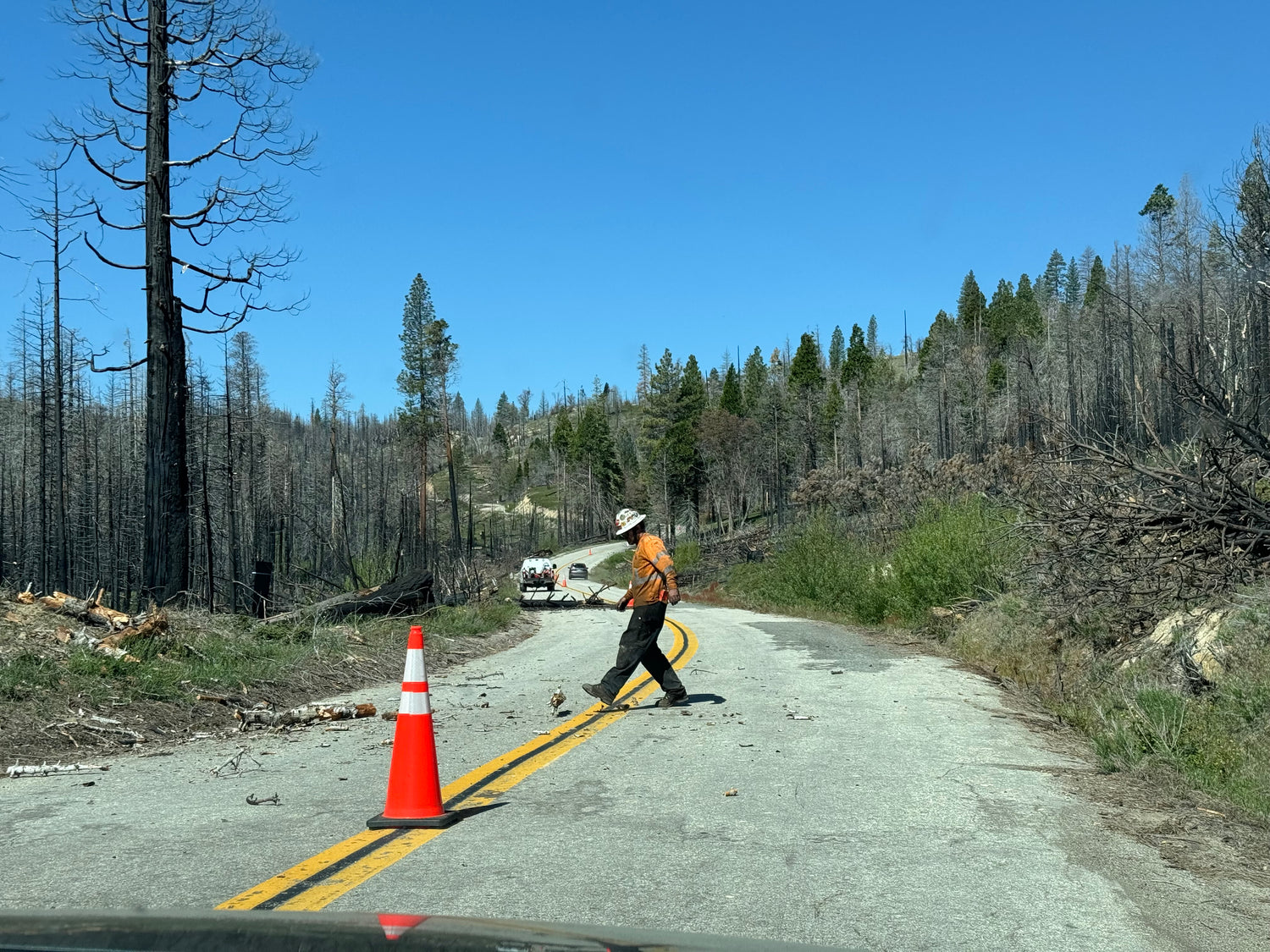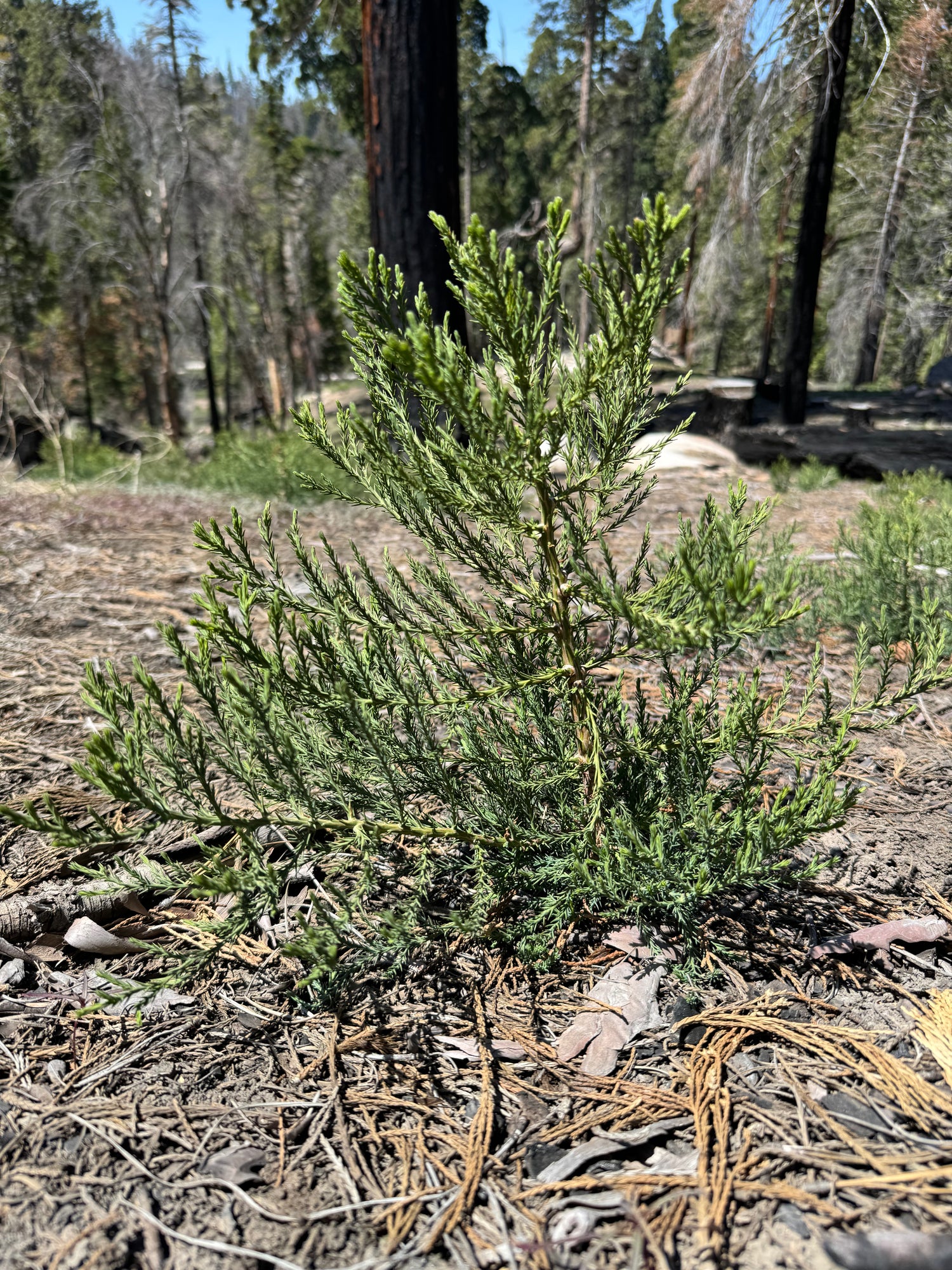In 2024, we took a road trip through California’s iconic Sequoia National Park and surrounding areas, journeying through the heart of the Sequoia’s native range. Along the way, we witnessed firsthand the powerful effects of recent forest fires on these ancient groves. The charred remnants of towering trees stood as a testament to the devastation, but amid the ashes, we saw something truly hopeful: new Sequoia saplings emerging from the forest floor, a clear sign that these resilient giants are far from defeated. This journey deepened our understanding of the intricate relationship between fire and Sequoia ecosystems—a balance of destruction and regeneration that has been at play for centuries.

In recent years, California’s Giant Sequoia habitats have been significantly impacted by several large wildfires, notably the Castle Fire in 2020, and the KNP Complex Fire and Windy Fire in 2021.
The impact of recent fires is clear to see for anyone driving through the Sierra Nevada range. There are miles upon miles of devistation to behold.
Historically, fire has been a vital component of the Giant Sequoia ecosystem, playing a crucial role in maintaining forest health and promoting regeneration. These ancient trees have evolved alongside fire, developing unique adaptations that allow them to not only survive but thrive in fire-prone environments.
Before the 20th century, the Sierra Nevada’s Giant Sequoia groves experienced frequent, low-intensity fires, typically occurring every 6 to 35 years. These fires were essential for:
• Clearing Underbrush: Periodic fires removed accumulated dead vegetation, reducing competition for young Sequoia saplings and creating open spaces for new growth.
• Releasing Seeds: The heat from fires opened the Sequoia cones, facilitating seed dispersal and germination.
• Nutrient Cycling: Fires returned nutrients to the soil, enriching it and supporting the growth of diverse plant species.
Giant Sequoias are uniquely adapted to withstand fire. Their thick, fire-resistant bark, which can be up to two feet thick, insulates them from heat, allowing them to survive many fires over their lifetimes.
Why the fires are getting worse
Disruption of Natural Fire Cycles
In the late 19th and early 20th centuries, fire suppression policies were implemented, leading to the accumulation of dense vegetation and increased fuel loads in the forests. This disruption of the natural fire regime resulted in:
• Fuel Accumulation: Without regular fires, dead trees, shrubs, and other vegetation built up, creating a significant fire hazard.
• Increased Tree Density: The absence of fire allowed fire-sensitive species, such as white fir, to proliferate, leading to overcrowded forests.
• Altered Forest Structure: The lack of fire-induced disturbances changed the composition and structure of the forest, affecting biodiversity and ecosystem health.
Impact of Climate Change on Fire Behavior
The current climate crisis has exacerbated the situation, leading to:
• Higher Severity Fires: Warming temperatures and prolonged droughts have increased the frequency and intensity of wildfires, making them more destructive.
• Extended Fire Seasons: Longer periods of dry conditions have lengthened the fire season, increasing the window for wildfires to occur.
• Increased Tree Mortality: The combination of dense vegetation and severe fires has led to unprecedented mortality rates among mature Sequoias.
These factors have pushed the Sequoia ecosystem to its limits, challenging the resilience of these ancient trees and the biodiversity they support.

But there remains hope
While fire has historically been a natural and beneficial component of the Giant Sequoia ecosystem, the combination of disrupted fire regimes and climate change has led to more intense and frequent fires. This shift poses significant challenges for the survival and regeneration of Sequoia groves. Understanding and addressing these changes is crucial for the conservation of these majestic trees and the health of their habitats.
The cleared forest floor of the sequoia groves we saw were covered in small samplings which had taken hold since the most recent fires - showcasing the power of forest fires in clearing the canopy and allowing for new growth. However, if fires become too intense, the species will be at risk. As a society we need to ensure we are protecting the future of the natural habitat of the Sequoia.


